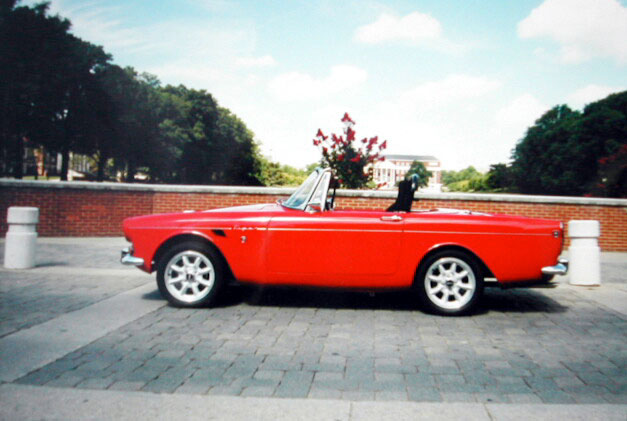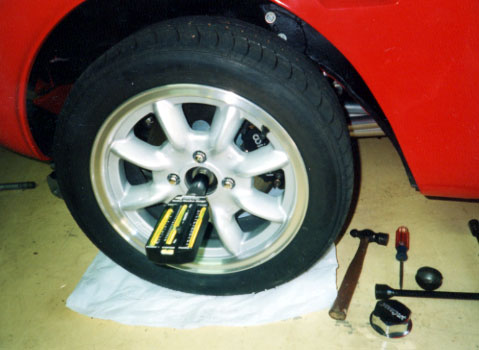Performance Tuning Front End Alignment

An Article by Larry Paulick
March, 2001
Preface: Larry Paulick is a prolific contributer to the Tiger List (see "Links" page for joining), as well as a contributing editor in our Technical Tips area. Long recognized as a fearless innovator in Tiger modifications, he is kicking off our new "Performance Tuning" section with these experiences in Front End Alignment to suit your application.
Editor
Page 1
Introduction:
Hi Group. Well I am finally getting my alignment on the Tiger to come into spec, which is 4 degrees pos. caster, 1/2 degree neg. camber, and 1/8" neg. toe in.
The ackerman angle is equal last time I checked, using Dale A's ackerman kit, which includes an adapter and extensions for the parts you purchase, which include a MG Midget R&P, MGB Steering Arms, and Alpine tie rod ends. This is an improvement from the stock Tiger ackerman angles which has a larger radius on the inside turning radius than the outside. By now, you are aware that when backing up, with the wheels turned sharply, this has been the probable cause of the lower fulcrum pin breaking.
First a Big Thanks you to Tom Hall, Bob Palmer, John Logan, and I am sure I missed someone, for the help in getting this portion of the car set up.
I went from the stock 225 ppi springs, to CAT 335 ppi springs to 425 ppi springs. The CAT springs were too tall, and I cut the springs, with an abrasive wheel, heated the cut coil end, and ground that end so that it would sit square.
I was not happy with it, don't ask, and purchased a 425 ppi spring, with the recommendations of Bob Palmer. I drove Larry Wrights car with these springs, and it is not harsh, like I expected it to be, with almost double the spring rate.
I am waiting for Rick at Sunbeam Specialties to send the 7/8" diameter anti sway bar, as the first one was for an early Alpine, not the Tiger, and it would not fit. Problem is the company making the bars, is currently having problems, and I have to wait for the new bar.
For those of you who have never done this before, it's not so bad if you know how to tackle the issue, so here goes on what I learned.
1. First, you will need to determine what you are going to do with the car, ie touring, autocrossing, etc, so that you can decide on the specs for alignment.
After many emails from many people, I settled on an alignment spec of 4 degrees pos. caster, 1/2 degrees neg. camber, and 1/8" neg. toe in. This will provide a reasonable touring car, but allow autocrossing, while not getting so far out of spec to ruin your tires for daily driving. This is a personal preference for many drivers, but this is what I am going to start out with.
2. The alignment must be set up in the following sequence, caster, camber, and toe in. There are several web sight that explain this sequence, and what each of the 3 alignment specs are. A good one is http://www.longacreracing.com/.

Note - I purchase a Longacre caster/camber alignment tool for approximately $160. This includes the alignment tool itself, and an adapter that screws onto the few threads of the spindle where the front wheel bearing are located. If the nut holding the bearings on is good with no rough surfaces, then you have a very stable and repeatable platform for measuring the caster/camber.
You will need a reasonably level surface to put the 4 wheels of the car
on, but the Longacre gauge allows for a surface that is not completely level.
When you get your car aligned at your local mass merchant store, they do
not allow you to sit in the car. When you sit in the car, the caster
and camber settings change, and therefore it is more accurate if you can
have the car set up for how you will normally drive your car, with you
in it, in the situation where you want accurate alignment, ie autocrossing.
 **
**

